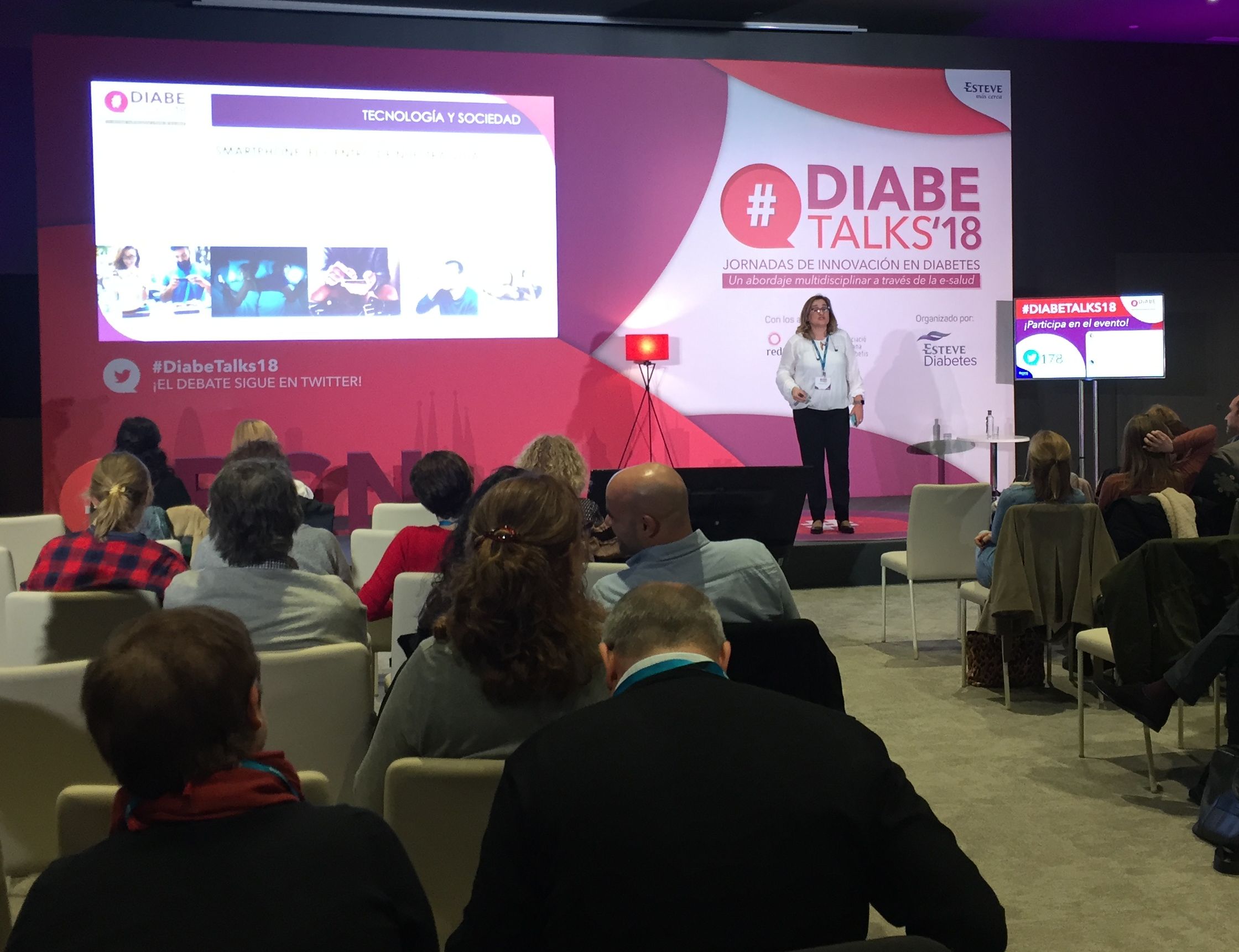26/02/2018
IN DIABETES, THE USE OF E-HEALTH IS MORE WIDESPREAD AMONG PATIENTS THAN AMONG PROFESSIONALS
Diabetes currently tops the list of apps available on health
According to experts, diabetes treatment should include the prescription of digital tools to supplement daily clinical practice
The goal is to empower patients by using secure, reliable, personalized resources to improve the control of their disease

Websites, blogs, Twitter, Facebook, Apps
These tools are increasingly present in all fields in our daily life, and therefore health is no exception. In order to offer a practical vision of the benefits that digital resources can bring, ESTEVE has organized three simultaneous meetings in Seville, Barcelona and Madrid, linked up live and including talks, interactive round tables and practical workshops imparted by healthcare providers, digital communication professionals, members of the health Administration and patients, and addressed to more than 250 healthcare providers.
Currently, 70% of health-related apps are addressed to the general public and 30% are addressed to professionals and patients (1). Diabetes comes first in this percentage, and the number of apps has doubled since 2013 and is expected to triple in 2021 (2). With this in mind and because Spain is the European country with more smartphones (3), a world of possibilities opens up in this field. All the more so because diabetes is a chronic disease that affects 13.8% of Spaniards and its incidence is expected to increase over the coming years (4) .
However, we are seeing that certain aspects of e-health are more widespread among patients than among professionals, although more and more of us are applying ICTs in diabetes, says Dr. Cintia González, a consultant 1 at the Endocrinology and Nutrition Service of Hospital de Sant Pau, an associate professor at the Autonomous University of Barcelona CIBER-BBN, and the coordinator of the 2.0 Diabetes Group of the Spanish Society of Diabetes (SED). Just as we prescribe pharmacological treatment, we should also prescribe digital tools to help patients better manage and control their disease.
Dr. Belén Benito, a Family and Community Medicine specialist, a member of the Diabetes Study Group Network (RedGDPS) and a member of the 2.0 Diabetes Group of the SED, explains that the purpose of these meetings is to improve the training of professionals, physicians and nurses, both in primary care and specialties, on the use of ICTs to improve the management of patients by providing them with tools to self-manage their diabetes.
The #diabetalks18 meetings have included talks, interactive round tables and practical workshops with expert professionals and also with diabetic persons such as Óscar López, the author of a blog called Reflections of a Sugary Jedi. According to Dr. González, the goal is to approach the most important digital resources websites, blogs, social media and apps in a very practical way so that professionals can put them into practice when they arrive at the office on Monday. The idea is to take an online course with the contents generated at this meeting.
Empowering the patient with secure, reliable technology
Both doctors point out that the application of technologies to health should begin to be part of the professionals curricula and the training of Resident Physicians. Indeed, the process is unstoppable and will be increasingly established. The goal is to empower patients to make them an active element of the treatment and follow-up of their disease by means of digital tools that will help them better understand what diabetes is, change their diet and exercise behaviors, and monitor their glucose levels. This will eventually lead to health benefits and better communication with their healthcare providers.
There is still little scientific evidence on the benefits of e-health because few studies have been conducted on this field. However, according to Dr. Benito, a recent meta-analysis of 14 studies with data from almost 1,400 patients concluded that using an app can reduce glycosylated hemoglobin levels by 0.5%5. Also, another study was recently published where the vibration of the mobile phone was used to detect peripheral neuropathy in diabetic patients.
Each app must be selected to meet the specific needs of each person. According to Dr. González, the treatment of diabetes is and will always be personalized, and apps should be selected according to the same principle, that is, meeting the specific needs of each person.
Also importantly, secure and reliable resources provided with seals of quality or the evaluation of a scientific committee should be prescribed. To this end, spaces like Diabeweb (www.diabeweb.es), created by ESTEVE in collaboration with the RedGDPS and FEDE, can be used. This space gathers the best resources against diabetes in the Internet (websites, apps and blogs) and is based on quality and sound scientific criteria endorsed by the RedGDPS and reviewed by a scientific committee composed of members of the 2.0 Workgroup of the SED.
Regarding social media, both doctors coincide in that Twitter is the most widely used platform to obtain information readily and that many professionals use it to communicate with their patients by means of chats. For its part, Facebook is used for more educational purposes and to be informed about events, and is mostly used by self-regulated virtual communities of patients. According to Dr. González, there is evidence that the use of social media improves the patients health, mainly their emotional health, and the knowledge and self-management of their disease.
Gamification, that is, the use of games for didactic purposes, is yet another increasingly used resource, and a very useful one particularly among pediatric patients and even adolescents. The goal here is to learn by playing, with drawings, characters, challenges, etc. and also to take the drama out of the disease in this age group.
References
1.IMS Institute for Healthcare Informatics. Patient Apps for Improved Healthcare. From Novelty to Mainstream.
2.Research2guidance. Diabetes apps that primary focus on diabetes that were / are / will be listed on the Apple App Store and Google Play Store in that year
3.Informe anual sobre las apps en España 2013. The App Date
4.Sociedad Española de Diabetes (SED)
5.Hou C. et al. Do Mobile Phone Applications Improve Glycemic Control (HbA1c) in the Self-management of Diabetes? A Systematic Review, Meta-analysis, and GRADE of 14 Randomized Trials. Diabetes Care 2016 Nov, 39 (11): 2089-2095.



